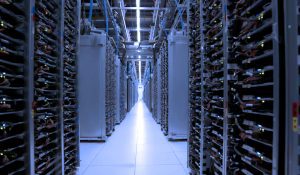As I just returned from hosting an expert panel on “containerized, modular data centers” at the IMN Data Center conference in San Jose, CA it has become clear to me that the industry has done a pathetic job educating the world on exactly what prefabricated data centers are, what benefits can be achieved and where they can or should be used. This will be blog #1 in an 8 part series on the 7 benefits of prefabrication for data centers.
We live in a world of continual evolution. The world changed dramatically in the period between about 1760 to1840 when hand production methods went to machines, and fuel changed from wood to coal and steam. Kerosene was used as the primary lighting source for much of the world until electricity was built out. A useless byproduct of kerosene production, gasoline became the fuel for the internal combustion engine (1876) in wide use today, but now there is an uptick in new technologies gaining traction like electric cars.
Is prefabrication of data centers as important as the industrial revolution or gas powered vehicles?? Maybe not, but it has not been that long ago when the only way to get a personal computer was to go to one of the thousands of PC shops where they hand made PC’s out of power supplies, storage, microprocessors, operating systems, etc. Sounds familiar to data centers doesn’t it? Then Dell and others evolved production to deliver entire custom personal computers faster and at lower cost.
We are living through change in data center infrastructure right now and prefabrication is model that will power this change. What are the benefits I will be discussing in future blogs?
Speed of deployment Cost savings throughout entire data center life cycle
Hedge against uncertainty
Easier to deploy various density and availability in the same data center
Reduced component compatibility issues
Predictable efficiency
Portability – Reconfigurable
You can also find more challenges and solutions on prefabricated modules here



